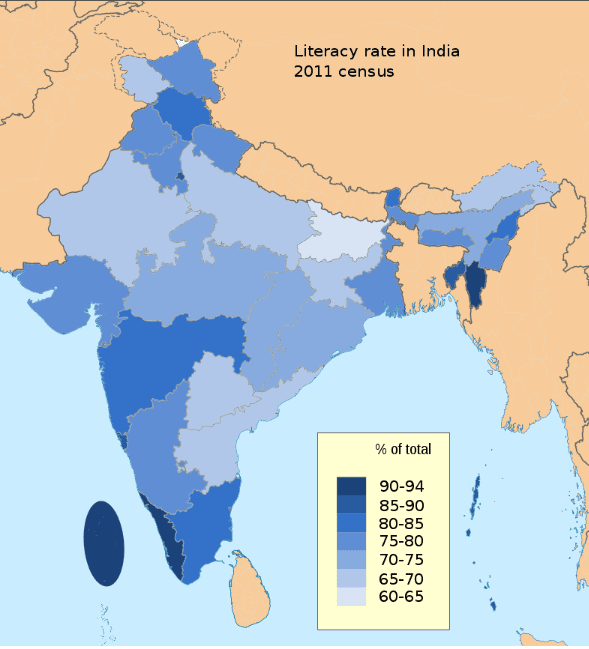Welcome to the World of Digital Transformation Master the Process and Framework of Content.....Communication and Commerce. Leverage Smartly numerous Apps, tools and Techniques for your Career and Business Growth. Understand your Strengths, (Limitations of your Competitors) POSITION YOUR VALUE-CONTENT to Attract and Engage. Experience the Digital Abundance !!!
The IT industry has played a significant role in enhancing the Indian economy, besides putting India on the global map.
The IT industry has played a significant role in enhancing the Indian economy, besides putting India on the global map.

The IT industry has played a significant role in enhancing the Indian economy, besides putting India on the global map.
- The IT industry has played a significant role in enhancing the Indian economy, besides putting India on the global map.
The Era of Thinkers in the Digital AgeThe Government of India (GoI) has launched several policies to foster the development of science and technology over the decades. Starting with the 1958 Scientific Policy Resolution, followed by the 1983 Technology Policy Statement, the 2003 Science and Technology Policy, and the 2013 Science, Technology, and Innovation Policy, the GoI has consistently introduced measures to encourage the growth of the IT industry. These initiatives have been scalable, reaching a broad audience.
The IT industry began to open up post-1990s and has since significantly contributed to the country’s gross domestic product (GDP). According to NASSCOM’s 2020 report titled "Strategic Review — Techade: The New Decade," the IT-BPM industry generated $191 billion in revenue and hired 205,000 new employees in FY 2020. The IT services sector garnered the highest revenue of $97 billion, with a growth of 6.7 percent, followed by e-commerce at $54 billion. The sector generated exports of over $147 billion in FY2020, growing at 8.1 percent from the previous year.
A noticeable trend last year was the continued focus on digital revenues, which grew by over 23 percent, highlighting the increasing prominence of digital technologies. Investment in digital skills is rising, with organizations aligning their business models to digital practices. Up to 28 percent of organizational revenues were recorded for the digital segment, and Indian enterprises spent over $2 billion domestically to accelerate digital transformation.
The IT industry has evolved from an outsourcing segment to a digitally enabled transformative sector. Software professionals have progressed from basic programming to delivering top-class software development services for global clients, focusing on improving business performance, increasing productivity, and enhancing customer experience.
Several factors have contributed to the growth of the IT industry. The GoI has set up IT clusters and generated jobs through e-governance. The 12-hour time difference between India and the US makes it ideal for outsourcing work. India’s large English-speaking talent pool attracts global IT companies to strengthen their presence in India by establishing development centers and R&D units. The focus areas include software/internet, telecom, semiconductor, and automotive industries. Additionally, tech startups have fine-tuned their offerings to meet global client demands.
Technology integration is now ubiquitous across sectors, including manufacturing, finance, banking, marketing, entertainment, and education. This growth has led to an increase in the number of engineering colleges, even in tier-2 and tier-3 cities.
Sam Pitroda, an Indian-born telecom engineer, inventor, and entrepreneur, is credited with laying the foundation of India’s telecom industry. Working closely with Prime Minister Rajiv Gandhi, he established the Center for the Development of Telematics (C-DOT) and implemented measures to make telephone lines available for rural and urban Indians.
From landline phones, the GoI embarked on an ambitious task of providing broadband connectivity to gram panchayats (local self-government institutions at the village level). BharatNet, GoI’s flagship project, aims to link each of the 2.5 lakh Gram Panchayats through an optical fiber network in phases. This largest rural connectivity project in the world is the first pillar of the Digital India Programme, facilitating the delivery of various e-services, including e-health, e-education, e-governance, and e-commerce.
The 2018 National Digital Communications Policy set goals to be achieved by 2022, including providing broadband for all and creating four million additional jobs in the digital communications sector. It aims to increase the sector’s contribution to India’s GDP from 6 percent in 2017 to 8 percent.
According to the Department of Telecommunication (DoT) website, India is the world’s second-largest telecommunications market, with a subscriber base of 1,189.28 million, including 1,168.32 million mobile and 20.96 million landline connections. The number of Internet subscribers stands at 665.31 million as of June 2019. With 4G networks, data consumption is expected to rise drastically, enhancing the e-commerce segment.
The advent of 5G holds the promise of high-value applications, leading to a ‘hyper-connected society.’ 5G will exponentially increase network data speeds and downloads, adding a new dimension to missions like Digital India and Smart Cities. Many mobile companies are preparing to launch 5G phones in India. The GoI aims to position India as a globally synchronized participant in designing, developing, and manufacturing 5G-based technologies, products, and applications. A multi-disciplinary high-level forum has been constituted to suggest vision, mission, and goals for 5G India 2020, along with an action plan and roadmap.
In Sum
As we move forward, it is clear that these developments will shape the future. Students should focus on acquiring relevant skills, and companies should develop their digital roadmaps. By doing so, we can build a successful and vibrant digital economy.
Ref: eandt.theiet.org
